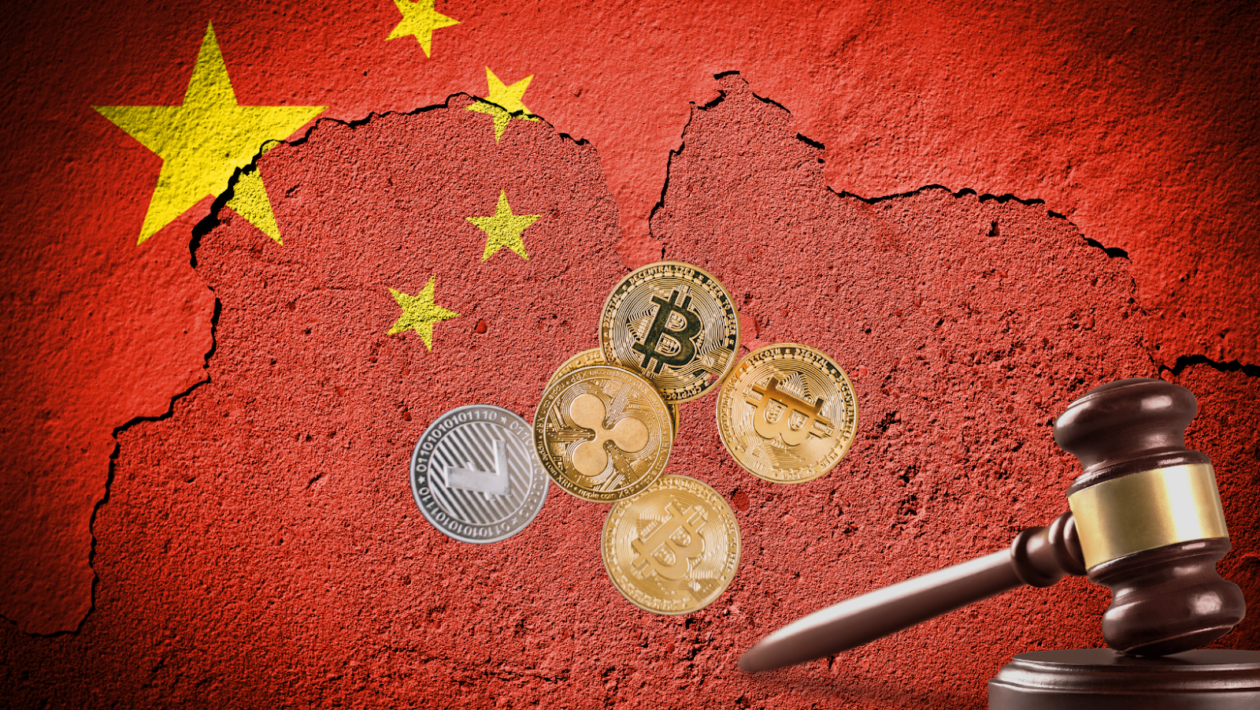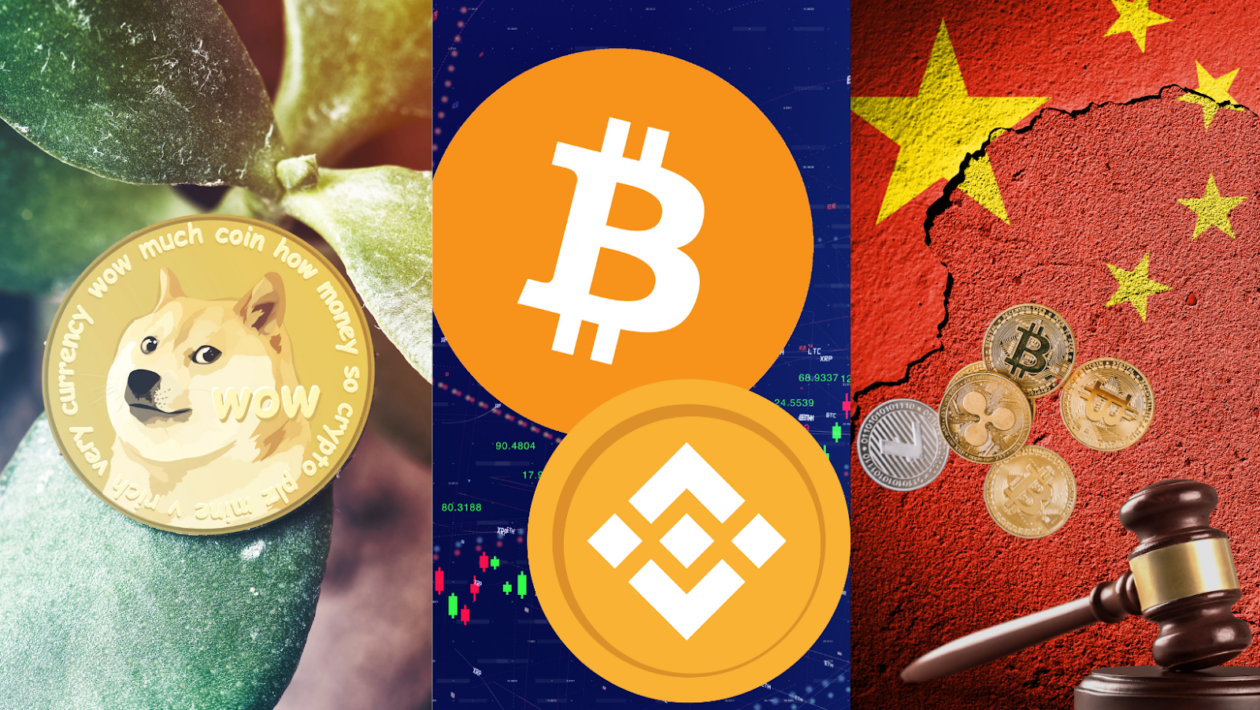In this issue
- Bitcoin network: Stress test
- Binance: Applying brakes
- China: Crypto in court
From the editor’s desk
Dear Reader,
It seems the crypto conversation is migrating and fast.
This week, I’m writing from the Middle East on the tails of the Dubai FinTech Summit and AIM (Annual Investment Meeting) in Abu Dhabi in the United Arab Emirates. I’ve been speaking with local firms and investors, along with regulators and regional leaders. And it’s hard to gloss over the disconnect between the shining ideals that are supposed to underpin the U.S. economic model and the dysfunctional reality that the crypto industry is grappling with. The U.S. Securities and Exchange Commission, in particular, is throwing its weight around and failing to support the emergence of an innovative industry. So it’s no surprise to see some significant industry leaders from America — such as Coinbase CEO Brian Armstrong — making appearances in the Middle East this week.
Coinbase, the exchange giant that recently sued the SEC for more clarity on crypto regulation — a call that has echoed throughout the entire digital asset industry for longer than anyone cares to remember — may find that clarity abroad, as U.A.E. looks to entrench its position in the Web3 digital ecosystem. Earlier this year, Abu Dhabi launched a US$2 billion fund to support U.A.E.’s Digital Economy Strategy as part of its diversification efforts into non-oil sectors.
That strategy is also in play in Asia as Hong Kong opens up its policy arms with a new regulatory framework for virtual asset service providers to pave the way for crypto trading for the retail market. Hong Kong, too, is looking at comprehensive ways to win back the exodus of talent and innovation that left a few years before as regulators clamped down. And these regions with shared strategies and interests are exploring ways to collaborate. A delegation of industry leaders from Hong Kong and across APAC came to learn how to build meaningful business bridges into the MENA region.
Even China is providing more clarity on cryptocurrencies (albeit cautiously). China’s Supreme Court, it has been revealed, ruled back in January that cryptocurrencies possess certain attributes of virtual property. Meanwhile in the U.S., the SEC and the CFTC remain completely at loggerheads over whether cryptos are securities or commodities, an impasse in which no end is in sight, with far-reaching implications for the industry.
Crypto policy intransigence from America’s “shining city on a hill” has us wondering if there will soon be geographical moves as the industry finds guiding light elsewhere.
Until the next time,
Angie Lau,
Founder and Editor-in-Chief
Forkast
1. Bitcoin network: Stress test

Two months after the launch of BRC-20 standards, the Bitcoin blockchain has become a popular destination for memecoins, a cryptocurrency market niche previously dominated by Ethereum. The market capitalization of Bitcoin-based memecoins has surged from around US$130 million at the beginning of May to over US$588 million at press time, triggering congestion on the world’s oldest blockchain network.
- BRC-20 is an experimental token standard based on the Bitcoin blockchain, introduced on March 9 this year by pseudonymous blockchain enthusiast “Domo.” Inspired by the Ethereum blockchain’s ERC-20 standards, BRC-20 allows users to issue fungible tokens through Bitcoin’s Ordinals protocol. On the same day, Domo launched the first BRC-20 token, Ordi.
- More than 14,300 BRC-20 tokens have been issued on the Bitcoin blockchain since the standard was launched, according to blockchain data tracker BRC-20.io. Memecoins including ORDI, PEPE Ordinals (not to be confused with the Ethereum-based PEPE memecoin), and MEME have taken the lead in terms of market capitalization, with ORDI’s market cap currently topping US$300 million, almost-two thirds that of all BRC-20 tokens combined.
- Memecoins are cryptocurrencies, such as Dogecoin and the Shiba Inu token, that started as a joke or meme. Memecoins typically have no underlying utility, but some have attained market caps in the billions of dollars. Memecoin prices are usually extremely volatile, and their popularity and values are driven mainly by fads and a herd mentality.
- The prices of BRC-20 tokens have been on a roller coaster in the past several days, with their total market cap exceeding US$1 billion on Monday, plunging more than 28% to around US$689 million on Tuesday, and sliding some more to under US$580 million on Thursday evening in Hong Kong, according to BRC-20.io.
- The BRC-20 memecoin surge has driven up transaction fees on the Bitcoin blockchain and put the network’s capabilities to the test. Transaction fees for minting tokens using the Bitcoin Ordinals protocol reached more than 151 BTC on May 9, an almost 40-fold increase from 4.30 BTC on March 9 when the BRC-20 standard was introduced, according to blockchain data analytics platform Dune Analytics.
- Driven by surging transactions and fees on the Bitcoin network, crypto exchange Binance suspended Bitcoin withdrawals twice ― once on May 7 and again on May 8 ― triggering a drop in cryptocurrency prices.
- Transactions made by Binance users could not get picked up by Bitcoin validators, as the withdrawals fees charged by the exchange were lower than those charged by the miners, according to a Bloomberg report that quoted Stefan von Haenisch, head of sales trading at digital asset brokerage OSL SG in Singapore.
- Driven by blockchain users seeking alternatives to high Bitcoin transaction fees, the Litecoin blockchain has logged record-high daily transactions this week. Transactions on Litecoin topped 525,000 on Monday, more than five times higher than the start of the month, according to blockchain data platform BitInfoCharts.
- Bitcoin’s Ordinals protocol was introduced in January and allows data such as text and images to be inscribed on the Bitcoin blockchain, a function similar to that used in the minting of non-fungible tokens.
Forkast.Insights | What does it mean?
Bitcoin’s embrace of memecoins helped the network achieve record-breaking transaction figures in the past week, but keen-eyed observers of the surge noticed that the dollar value of many transactions shrunk from US$1,000 to US$1. This downshift in value brings Bitcoin’s on-chain behavior into line with other chains able to host tokens.
It’s a good sign for Bitcoin, but a terrible one for the environment. Bitcoin is notoriously slow at updating. Of all the nodes on the Bitcoin network that are reachable (some hide behind VPNs to avoid detection) currently only around 36% run the latest version of Bitcoin’s core software.
That makes upgrading all nodes difficult and makes changes to Bitcoin’s core software a challenge. Introducing the BRC-20 token standard is a demonstration that change is possible on the network. But one change that hasn’t been considered is Bitcoin’s horrendous energy consumption.
Bitcoin, now the only large blockchain running on a proof-of-work protocol, continues to tax energy grids across the world. The surge in transactions has increased the power needed to keep the network running. Although Bitcoin’s electricity consumption has fallen significantly below its usage from a year ago, it represents a problem for the long-term sustainability of the network and the planet.
If the trend toward smaller transactions accelerates, expect Bitcoin to become a burden on energy grids once again, perhaps even forcing miners out of their adopted homes in such eco-unfriendly places with artificially low energy prices as Texas.
2. Pause and reset

Binance, the world’s largest crypto exchange, suspended Bitcoin withdrawals twice within 12 hours on Sunday and Monday Hong Kong time, citing a “large volume of pending transactions” on the Bitcoin blockchain. The suspension came amid a surge in Bitcoin transaction fees, which has put the world’s oldest blockchain network under pressure.
- Binance tweeted on Monday: “Our set fees did not anticipate the recent surge in Bitcoin network gas fees” and the exchange said it was attempting to solve the issue by amending pending transactions with higher fees so they would be picked up by mining pools.
- “Pending transactions are being processed by replacing them with higher transaction fees,” Binance said after it resumed allowing Bitcoin withdrawals. “To prevent a similar recurrence in the future, our fees have been adjusted. We will continue to monitor on-chain activity and adjust accordingly if needed.”
- Binance also noted in the tweet it has been working to integrate the Bitcoin Lightning Network into its transaction services, which it said would help in such situations. The Lightning Network is a layer-2 protocol for the Bitcoin blockchain that aims to improve the network’s scalability.
- On Sunday night Hong Kong time, Binance tweeted that it had encountered a “congestion issue” and had to halt Bitcoin withdrawals. About an hour and a half later, it said it had resumed withdrawals.
- Data from CryptoQuant showed that Binance saw total outflows of around 188,281 BTC on Sunday alone, the largest daily volume CryptoQuant has recorded since it started tracking such data in May 2020.
- The average transaction fee on the Bitcoin blockchain reached US$19.20 on Sunday, its highest level in almost two years, and soared to US$31.14 on Monday, according to data from blockchain information platform BitInfoCharts. Bitcoin’s average transaction fee was only US$2.88 at the beginning of May.
Forkast.Insights | What does it mean?
The surge in activity on the Bitcoin network, and the subsequent suspension of BTC withdrawals by Binance, was interpreted by some as an example of how someone might attack the Bitcoin network in the future, choking it with transaction requests.
Others, meanwhile, highlighted that to do so would require deep pockets, as one user had to pay more than 5 BTC (over US$170,000) to complete one transaction earlier this week. The congestion temporarily created a fork in the Bitcoin blockchain that meant nearly 10 BTC had been double-spent as it had been registered on both chains.
The last time this happened was November 2020, highlighting how unusual congestion on the network has become. The rocketing fees, alongside record-breaking outflows, suggest Bitcoin may be entering a new phase in its evolution.
The total number of Bitcoin-based digital assets is now more than 5 million, a figure that has doubled in less than a week.
Although historically Bitcoin has been used as a store of value, and the demand on the network has therefore been manageable, the explosion of people taking advantage of the BRC-20 standard means the network and its off-ramps need to adapt.
3. Small doses

Virtual assets can be used legally in China to settle debts in certain cases involving transactions made as part of barter agreements or labor services, despite the nation’s blanket ban on cryptocurrency transactions, the Supreme People’s Court of China declared at a conference earlier this year.
- The country’s top court said at the conference on financial cases in January that cryptocurrencies shared some attributes of virtual properties, and if parties in cases agreed to use small amounts of cryptocurrencies to settle their debts, those contracts should be regarded as valid by Chinese courts.
- If cryptocurrency transactions could not be executed due to legal restrictions, courts would determine compensation based on the actual value of the agreed sum of crypto involved when contracts were signed.
- The Supreme Court added that courts would not accept any complaints by users if their cryptocurrencies had been traded after Sept. 4, 2017 — the date that Beijing imposed a ban on initial coin offerings and crypto exchange services — and in cases in which trading platforms or token issuers failed to fulfill their liquidation obligations.
- Court records further clarified that the use of cryptocurrencies as payment for fiat currencies or physical commodities under the guise of contracts would be treated as illegal.
- The conference records align with the Chinese government’s stance on cryptocurrencies, which emphasizes that tokens such as Bitcoin, Ether and Tether do not have the same legal status as fiat money. China issued its comprehensive ban on cryptocurrency transactions in September 2021.
- Outside mainland China, Hong Kong’s push to develop itself as a crypto hub has received Beijing’s blessing, with Chinese state-owned banks now offering services to crypto firms in the territory.
Forkast.Insights | What does it mean?
The Supreme People’s Court’s draft conference minutes on how Chinese courts should deal with cryptocurrency disputes are setting a new tone for the country’s stance on crypto by recognizing crypto’s virtual property attributes.
However, the opinion of the top court remains less than crystal clear. Although it ruled that deals involving small sums of crypto should be deemed valid if they are made to settle debts involving exchanges or labor, it did not specify what sort of sums could be considered “small.”
Meanwhile, when it comes to labor, many Chinese citizens are still reportedly working from within the mainland for crypto exchanges based abroad, despite Beijing’s ban on such work as of September 2021. The latest Supreme Court guidance seems unlikely to overturn that labor restriction, as the top court noted that crypto compensation in contracts involving labor would be valid only if no other grounds existed to invalidate them.
Blockchain analytics firm Chainalysis estimates that an average of US$17 billion worth of crypto flowed into China monthly last year, half the level of 2021, according to a Bloomberg interview with Caroline Malcolm, Chainalysis’ global head of public policy. That suggests the ban has either been ineffective or only loosely enforced, according to the report.
The release of the Supreme Court’s consultation draft comes at an opportune time, with Hong Kong once again burnishing its crypto credentials. By declaring certain contracts involving crypto to be valid, Chinese courts appear to be aligning with the laws of Hong Kong, which recognize cryptocurrency as property. Does that suggest Chinese authorities could loosen their anti-crypto stance further and reverse the mainland’s crypto ban? We would not bet on it in the short term, but the more distant future is anyone’s guess.




